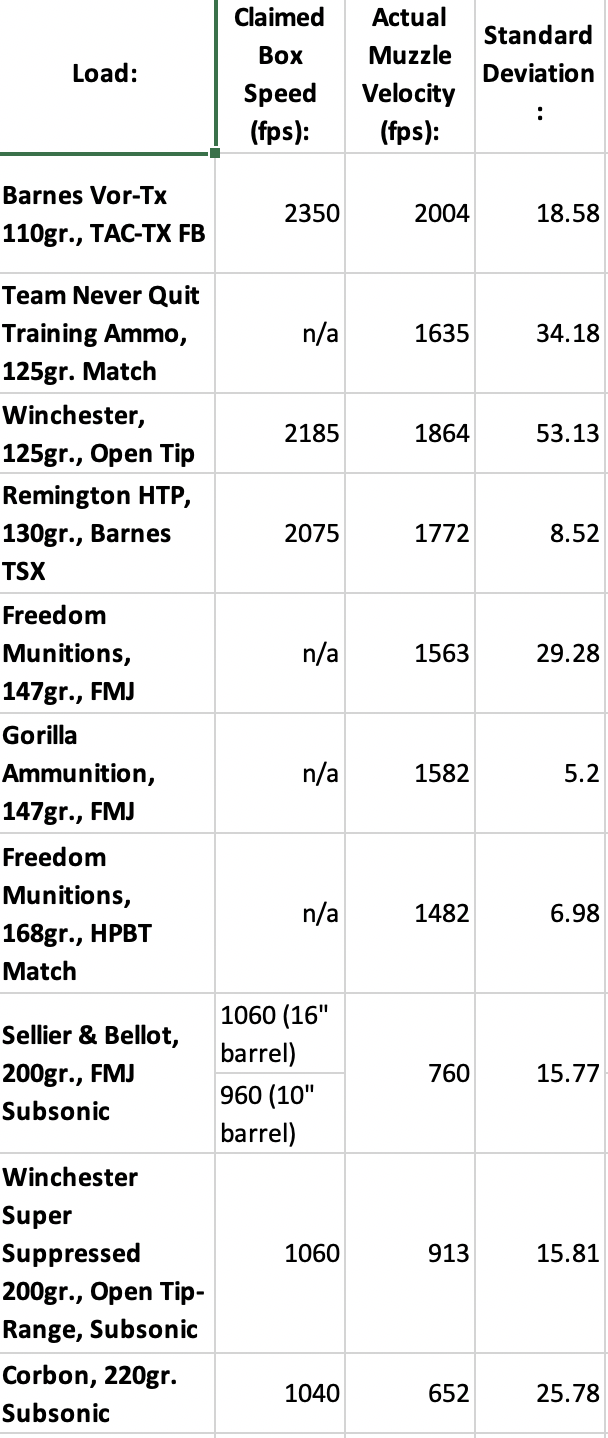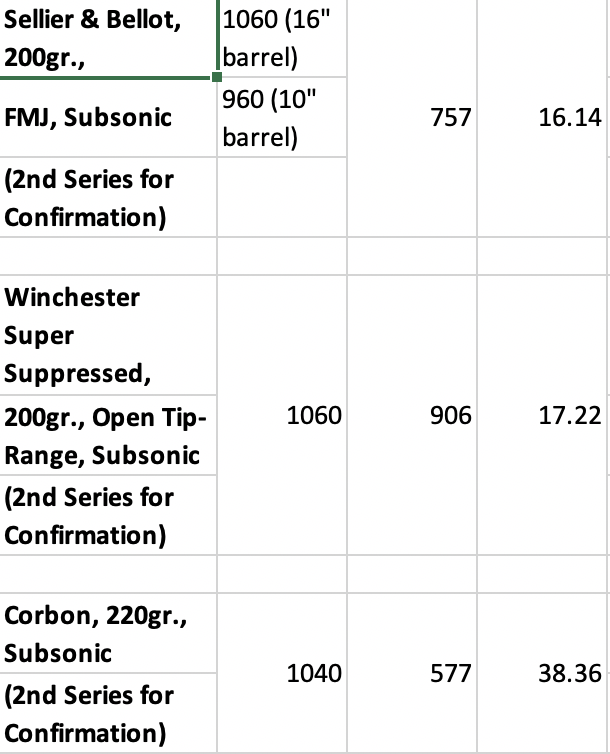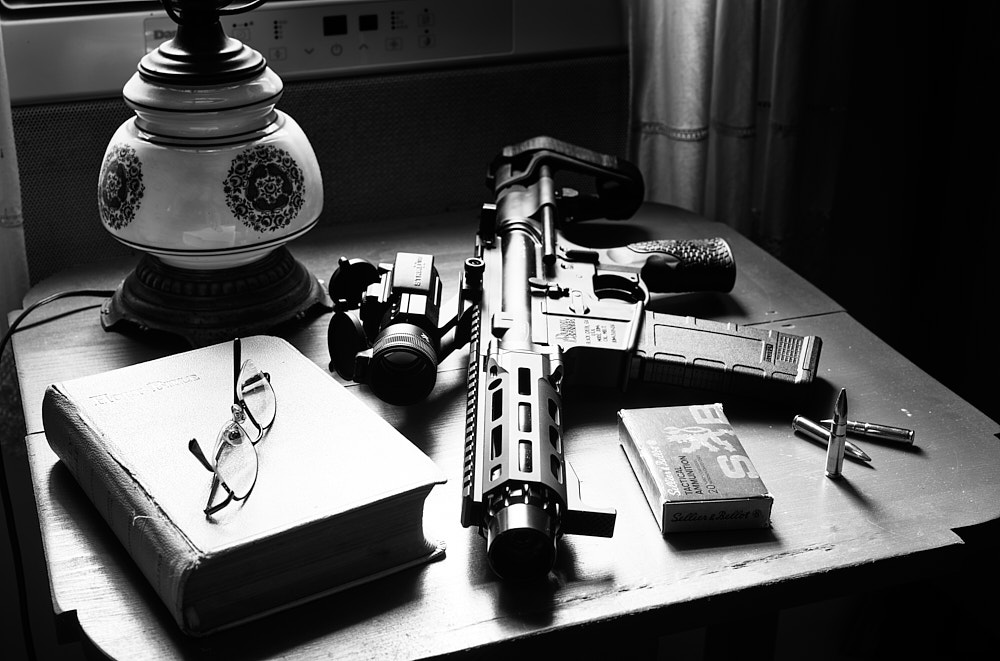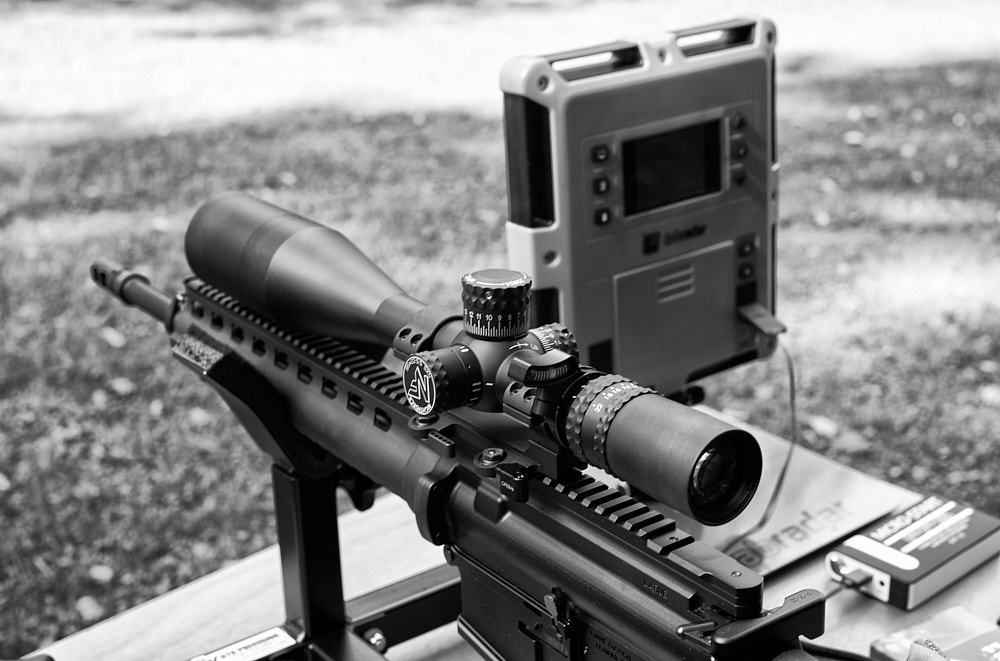The Kid is unwise is so many ways. And yet it’s undeniable that when the matter is finally, irrevocably joined, he and his weapon rule the darkness, imposing a sudden, implacable justice upon the mob that sought to devour him.
Those of us who routinely carry weapons against the evil of this world inevitably look to the pistol. A weapon compelling because of its size. It’s small enough and portable enough that the burden of carrying it is judged acceptable.
Alas, its virtues end there. Gunfights involving it are usually fraught affairs, challenged first by the difficulty in getting our bullet to go where we want. And then, if we’re able to achieve that, having that bullet persuade the bad guy to change his behavior. Those challenges together mean a tall order. Like a batter at the plate, they usually fail more than they succeed.
Rifles? Well, they’re long and they’re unwieldy. They’re usually heavy. And they require both hands to operate effectively. Frankly, unless you’re walking in the woods, or in an environment where you expect to be shot at, carrying one is a pain in the ass.
But when the shit hits the fan and daylight turns to dark, when all your chips have been pushed to the center, the rifle brings a profound advantage. It solves most of those two problems that burden the pistol. Like Robert Redford striding to the plate, “Wonderboy” in his hands, the rifle suddenly changes everything.
Come now the PDW, the “personal defense weapon.” A weapon that strives to split the difference. A weapon that seeks to give us some of that portability that defines the pistol and lets it disappear into the everydayness of our lives. And yet one that brings an actual rifle round to bear for when things go sideways.
The 300 Blackout lives at the center of that. A purpose-built round designed for small rifles and short barrels. Other calibers have tried, but mostly have been exercises in expediency over efficacy. Ballistics is a hard mistress.
As usual, I’m late to the party. I cringe when I think of how much ammo I could have bought, and the prices I could have paid for it, had I done all this a year ago.
But better late than never, right? The Daniel Defense DDM4 PDW showed up a few weeks ago. And I don’t know that I’ve ever been smitten, so fast.
When I received the email from the boys in Georgia that my DDM4 PDW had shipped, I had precisely zero rounds of 300 Blackout in the house. Had never even fired the caliber. So began a mad scurry to try and scrape together at least a minimal inventory of factory loads. As you might imagine, that ended up being something of a potpouri. A potpouri I paid through the nose for.
I have not yet performed any rigorous accuracy testing. My 5.56 AR’s wear ACOGs. And my 7.62 battle rifles are topped with high-magnification variable scopes. When the DDM4 PDW arrived I slapped on a Vortex Strikefire II – the only red dot optic I had in the house. A Trijicon MRO in a QD mount will be arriving shortly to replace that. Long story, short… I like magnified optics for any real accuracy work. Once the MRO and its QD mount is here I’ll be able to pop that off and throw a scope on to test for accuracy. In the meantime, the Vortex red dot has been adequate for chronographing loads and figuring out, in general, what is what.
I’ve dispensed with most of the fascinating data that comes from chronographing ammunition. Things like shot-to-shot muzzle velocity, extreme spread, velocity decay, and kinetic energy can give great insight into a round’s performance. But the numbers can get busy after a bit. So I’ve narrowed things down to just three pieces of information: claimed box speed, if the manufacturer listed it; actual muzzle velocity; and standard deviation. Averaged across five-shot strings, with temps within five degrees of 70F.
Muzzle velocity and standard deviation, in particular, tell us a great deal about a round, strongly suggesting both what terminal effects we can expect and how accurate the load is likely to be.
My DDM4 PDW checks in with a 7” barrel. Those of you with shorter or longer barrels will have to adjust accordingly.
We’ll start with some good news… the Barnes 110gr., load came to the party with some serious cred to uphold. I’m happy to report that it measured up, registering both good speed – notably, the only load clocking north of 2,000 fps, albeit barely – as well as good SD. Its terminal effects are reputed to be excellent. And because of all that it’s quickly become my go-to supersonic carry load. It’s what I will zero my optic to, and will be the point-of-impact reference for everything else.
Team Never Quit is at least loosely associated with Marcus Luttrell of Lone Survivor fame. I’d like to like their 125gr., load for that reason, if nothing else. Alas, it came in with marginal speed and a marginal SD. It’s good for plinking, but little else.
Winchester and Remington are both storied names, of course. For many of us, there’s an assumption of a certain quality attached to their ammo. Here, it’s a coin flip. The Winchester 125gr., load made good speed, but with a pretty awful SD. It’s plinking ammo. The Remington 130gr., HTP load, on the other hand, with the Barnes bullet, brought decent speed with an excellent SD. It would be my second choice for a supersonic self defense load. And probably my first choice for whitetail deer, were I inclined to hunt large game with the 300 Blackout.
Freedom Munitions and Gorilla – two brands I had never shot before - brought the three middleweight offerings. The 147gr., Freedom Munitions load was uninspiring, exhibiting good speed but with a moderate SD. Plinking ammo. The Gorilla 147gr., offering, on the other hand, gave slightly better speed, but also with an excellent SD. Between the two 147gr., loads, it’s clearly the better choice. It should make good target ammo. And if I couldn’t get Barnes 110gr., or Remington 130gr., HTP I’d load up a magazine with this stuff and not feel terribly undergunned.
If the 147gr., Freedom Munitions load was slightly meh, their 168gr., HPBT Match round was anything but. Good speed. Excellent SD. And a load, like the Remington 130gr., HTP, I’d consider as a second-tier self defense load. If you’re debating between the two Freedom Munitions loads, their 168gr., offering is a much better round.
Finally, three subsonic loads bring up the caboose. Subsonics matter in the 300 Blackout world, of course, because the caliber was designed with short barrels and suppressors in mind. Want the quietest close-quarter, anti-personnel round possible, while still retaining a reasonable degree of terminal effectiveness? A suppressed 300 Blackout, firing subsonic ammunition, is your answer.
Alas.
The Corbon 220gr., load was the first subsonic I shot. You know how when you trigger a shot and know instantly something is amiss?
Yeah. You feel it in your shoulder and at your ears and, in my case, in the chronograph display staring back at me.
Corbon says their round makes 1040 fps. They don’t specify what barrel length that’s from, but most manufacturers spec 16” for the 300 Blackout, so we’ll assume that. So, yeah, we would expect a pretty good reduction when we light off their load through a 7” barrel.
But, crikey… 652 fps! There wasn’t even enough energy to cycle the gun and feed the next round. I was stunned.
Back inside, I quickly confirmed that all five boxes I had received were from the same lot. I drafted a nice, little message and sent that off to Corbin, giving them that information, my results, and asking if they had any comment. Crickets.
A few days later, my order of 200gr., Sellier & Bellot showed up. The small, green box has kind of an old-school look to it. Right on the front it says “tactical ammunition.” They spec their load both in a 16” barrel (1060 fps) and 10” barrel (960 fps) – which is a nice tip-of-the-hat to real world usage. And, alone among the ten loads I tested, theirs came with sealed primers. Even their name has a kind of gravitas to it. I really wanted to like it.
Alas, the bench doesn’t lie. At 760 fps this load was notably better than the Corbon shit, but still well under what I’d consider minimum necessary velocity for anything going into harm’s way. SD was good, though. So if you want a really soft-shooting round that maybe will cycle your gun, while grouping pretty well, this one might be the ticket.
With two up and two down, my opinion of subsonic 300 Blackout wasn’t real high. Especially after the rather mediocre performance its 125gr., sibling had put in, I didn’t hold out much hope when the Winchester 200gr., subsonic load showed up. So it was a pleasant surprise when it proved itself to be head and shoulders above the Corbin and Sellier & Bellot loads. At 913 fps it clocked good – which is to say, expected – speed for a subsonic load in a short barrel. And it displayed a good SD. Finally, we have a subsonic load capable of serious work!
Happy as I was to finally have a good subsonic offering, I still remained curious about the dismal performance put in by the Corbin load, and the not-quite-as-bad-but-still-sucky numbers put up by the Sellier & Bellot. So I reprised all three subsonic loads, at the same time, with all shots happening within fifteen minutes of each other.
Both the Winchester and Sellier & Bellot loads confirmed their previous performance, with very similar velocity and SD numbers.
The Corbin… geez, just when you think it can’t get any worse – 577 fps (versus 652 fps in the first series) and a SD of 38.36 (versus 25.78 the first time). All from the same frickin box of ammo! Far and away the most inconsistent factory ammunition I have ever come across.
One last thing and I’ll wrap this up. Discreet Ballistics specializes in subsonic ammo. Among other things, they ask you to specify your barrel length and twist rate when ordering – which suggests they are using different powders and/or different charges for those different barrel lengths. That’s something a handloader would do. But something almost never seen in the commercial world. I hope it bodes well for their offering. I’ll let you know when my order is fulfilled in a few weeks.
It’s been a very long time since I’ve explored a new caliber. It’s kinda like that first dance with that pretty girl you had your eye on, back in the day. Much to explore. Much to hope for. And much to learn.



